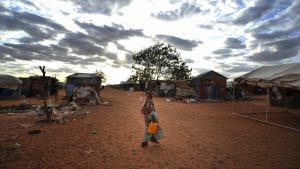
India’s first ever National Report on the state of the Climate Crisis has been released. The report has been prepared under the aegis of Ministry of Earth Sciences (MoES) with title “Assessment Of Climate Change Over The Indian Region”. The report analyses where India stands regarding long-term changes in climate patterns, and their attendant risks.
Click Here To Get Test Series For SBI PO 2020
Key findings of the report:
- It revealed that India’s average temperature has risen by 0.7 degrees Celsius between 1901-2018, citing the emission of greenhouse gases (GHG) as key reason of the temperature rise.
- It also predicted two different scenarios related to India’s temperature rise by 2099. In a best-case scenario of immediate mitigation of emissions, India’s temperature will still rise by 2.7 degrees Celsius while in the worst-case scenario temperature will increase by 4.4 degrees Celsius by the end of the century.
- About the monsoon, it shows that the precipitation over north India has reduced by 6% between 1951-2015 because of the polluting aerosol “brown cloud”. The monsoon is also expected to become more extreme in the upcoming decades.
- It also predicts the April-June heatwaves to become four times more frequent by 2099 as compared to that of 1976-2005.
- It stated that the sea level near Mumbai is rising at the rate of 3 cm per decade while it is 5 cm per decade off the Bengal coast.
- It mentioned that surface temperatures in the Indian Ocean including the Bay of Bengal and the Arabian Sea have increased by 1 degree Celsius between 1951-2015 which is higher than the global average.
- It also shows that the frequency of warm days and nights is expected to increase upto 55% and 70% respectively.
Important takeaways for all competitive exams:
- Union Minister of Earth Sciences: Harsh Vardhan.



 World Basketball Day 2025 Celebrates Bas...
World Basketball Day 2025 Celebrates Bas...
 UN Celebrates Second World Meditation Da...
UN Celebrates Second World Meditation Da...
 Winter Solstice 2025 Observed on Sunday,...
Winter Solstice 2025 Observed on Sunday,...







